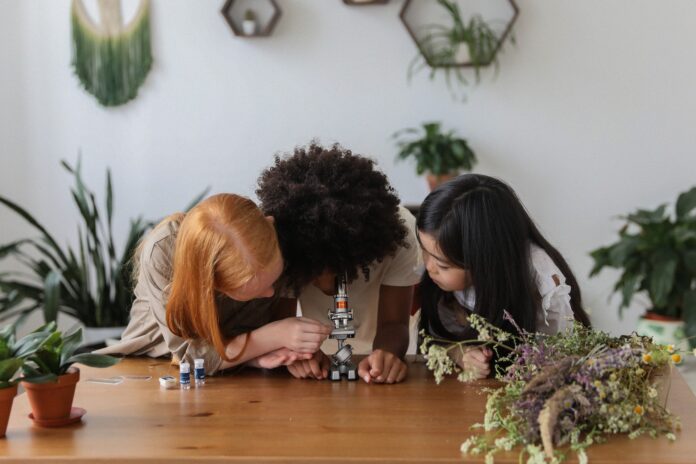While the amount of women in STEM-related fields has increased substantially over the past 50 years, we still have a long way to go towards offering equal opportunities for women and marginalized genders in STEM. Gender biases and negative stereotypes can make STEM fields unwelcoming environments, which in turn affects the attraction, retention, and progression of women through STEM-related careers.
To address this, a team of researchers from York University created an intervention that aims to challenge boys’ gendered beliefs about STEM. Through candid conversations during a STEM summer camp, the researchers helped boy campers foster a positive view of girls’ STEM abilities.
The research was led by Emily Cyr, a SSHRC Postdoctoral Fellow at York University, and published in Child Development.
Gender biases persist in all levels of STEM, from elementary school through to university. At the lowest levels, these biases can prevent girls from exploring STEM-related fields in high school, or choosing to pursue these fields in the future.
To help combat these biases, the researchers designed a conversation-based intervention that could be incorporated into STEM summer camps. They tested their intervention on 667 boys aged 9 to 15 who were attending STEM camps across Canada.
The boys in the study were assigned to either an intervention conversation or a control conversation. In the intervention group, camp staff members — all of whom were undergraduate or graduate students in STEM — led the boys through a multi-stage conversation. They first asked the boys about their most important values, and then shared a personal anecdote illustrating why girls’ STEM abilities are often underestimated. Finally, the boys were asked to reflect on their own similar experiences.
The researchers found that campers who participated in these intervention conversations left with a more positive perception of girls’ abilities in STEM, with the result being strongest among younger campers. This highlights the importance of addressing gender biases early on. Boys who participated in the intervention also ended up having more female friends at the end of camp.
“This kind of intervention could go a long way in tackling the persistent barriers women face when trying to feel a sense of belonging and flourish in STEM higher education and careers,” Cyr said in a press release.
“The difference with this study is that we addressed these gender gaps in childhood before girls are pushed out of STEM.”
We still have a long way to go towards ensuring gender equity in STEM, but early interventions like Cyr’s could help make a difference.








































